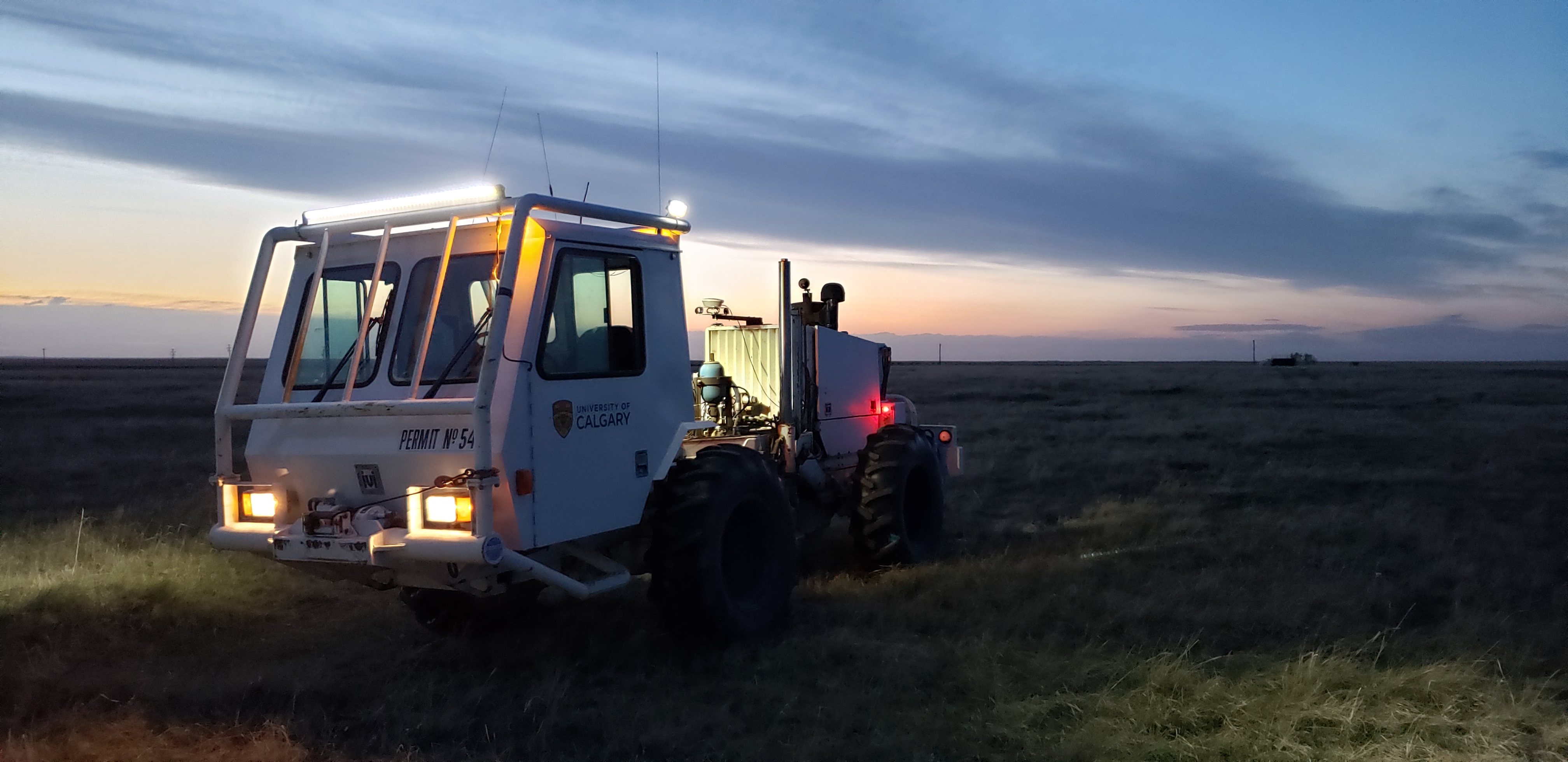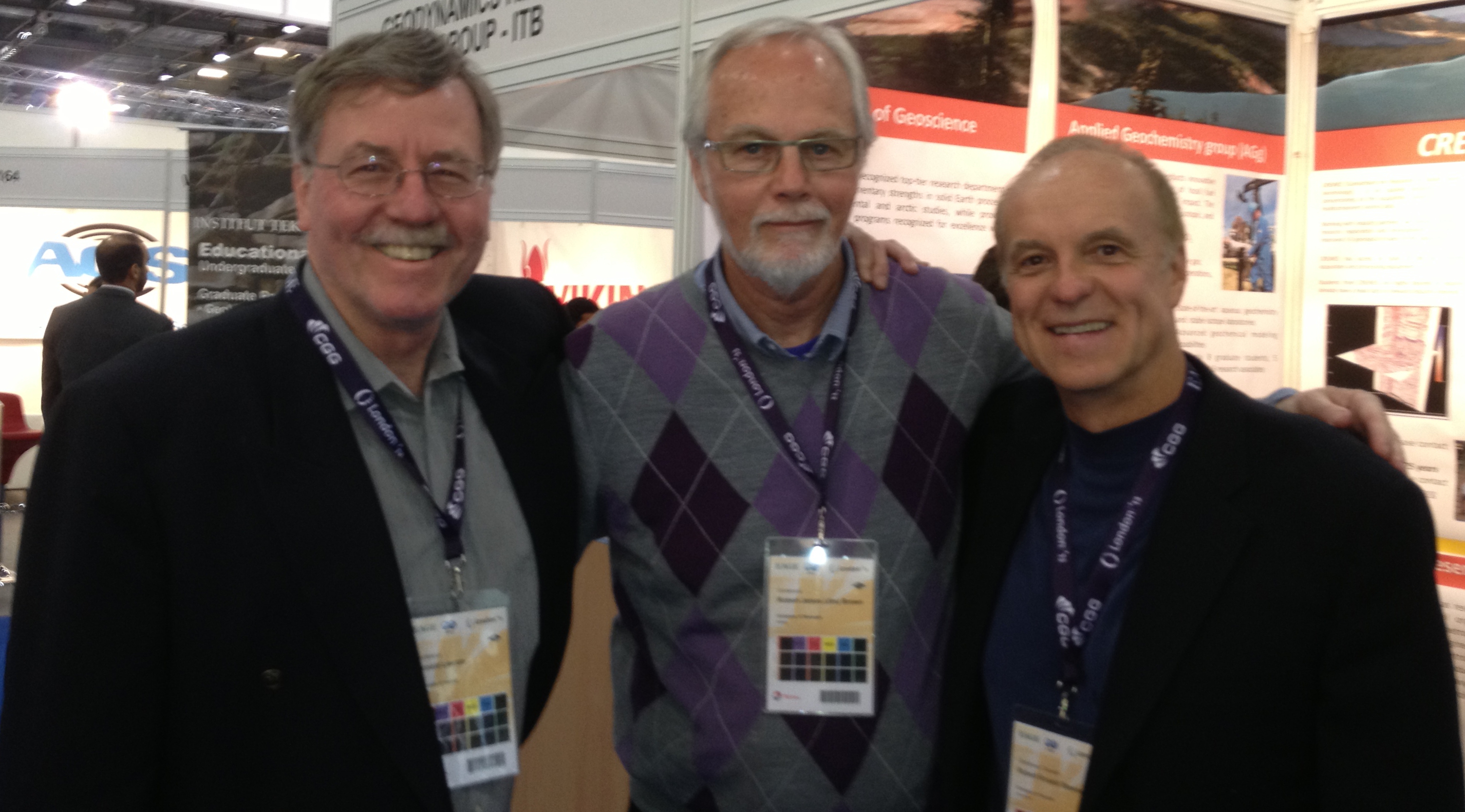About CREWES
The Consortium for Research in Elastic Wave Exploration Seismology (CREWES Project) is an industry and government funded research group that investigates and creates new and powerful means of mapping and understanding geological systems using seismic methods. A little like an MRI or CAT scan in medicine, we illuminate the subsurface with a field (in our case a sound field), sense the response of the unknown system to the incident sound, and use those measurements to infer maps of the properties of the system. For us, the maps are of the properties of the rock structures in the top few kilometres of the Earth's subsurface.
The seismic method has been around for a long time, but it is a field that is constantly being updated with new sensing technology, new source technology (that we use to gently shake the Earth), new computer technology with which to do increasingly complicated processing of the data, and, most importantly, new ideas for making better-resolved and more reliable geological subsurface models. The CREWES Project has been in existence for over 30 years now, but every year we create and publish new ideas and new results in our field, and every year we produce highly trained, problem-solving graduates, ready to jump into applied geophysical research careers.
Why do we do this? There a long-standing record of seismic geophysicists producing game-changing technology in the traditional fields of oil and gas exploration and production. The impact of new sensing technology, new geological and reservoir velocity model estimation methods, is still felt every day in those areas - and graduates who help create and apply those methods are produced in our program. However, consider also the next generation of energy in Canada and worldwide - whether involving geothermal, hydrogen, or natural gas; consider the growing mitigation technologies, such as Carbon Capture, Utilization and Storage. One is hard put to find any example for which the means to produce reliable, low-cost, and highly-resolved geological subsurface models are not key requirements. The basic and applied science we do at CREWES directly feeds these first-priority 21st century technological demands.

Seismic source helping us monitor CO2 injection at the Containment and Monitoring Institute Field Research Station.
What is our current focus? For us, the possibilities associated with seismic full waveform inversion, as a means of making the most of our seismic data measurements, and understanding them as the consequence of as complete a theory of wave propagation as our computers allow, make this area a big focus. These methods are poised to dramatically increase the number of different rock properties we can estimate, and similarly increase the resolution of the images of the properties we can make. However, we are also driven to make our methods as non-intrusive, and low-cost, as we can. So, investigation of the acquisition and use of fiberoptic seismic data, or DAS, is also a big priority for us at present, alongside other kinds of broadband seismic acquisition. We acquire, process, analyze, and invert DAS data, and create new computer codes and software packages for all of these tasks. Finally, to actually carry out these increasingly complex calculations, and make use of these increasingly high-volume data sets, we place as a major focus geocomputational research, where we determine how to set up high-performance computer environments, and architectures supporting the design and use of machine learning and deep learning networks, to solve these problems of moment.
What can you find on this website? This site contains a very large record and repository of CREWES research, past and present. Technical reports on this site cover basic ideas in applied seismology, old and new, as well as our research results with careful analyses of our new ideas. Free seismic processing, modeling, and inversion software of a large variety of types can be found here. And, learning labs where every new data science approach we can get our hands on are evaluated for use in geoscience applications, and introduced and discussed in training videos and demos. You can also find all of our contact information, and records of our publications, conference proceedings, technical presentations, etc.
Enjoy - and please feel free to contact us if you are interested in more information.
CREWES History
CREWES traces its origin to the year 1988 when Professors Rob Stewart, Don Lawton, and Jim Brown decided that the University-Industry consortium model could work in Canada to fund research and training in exploration seismology. We now have 37 years of history to document the clarity of their vision. Over this period, CREWES has seen the successful completion of 138 Masters degrees and 65 PhD`s. There have been 2164 CREWES research reports, resulting in 987 expanded (4-page) abstracts presented at geophysical conventions.

Don Lawton, Jim Brown, and Rob Stewart
